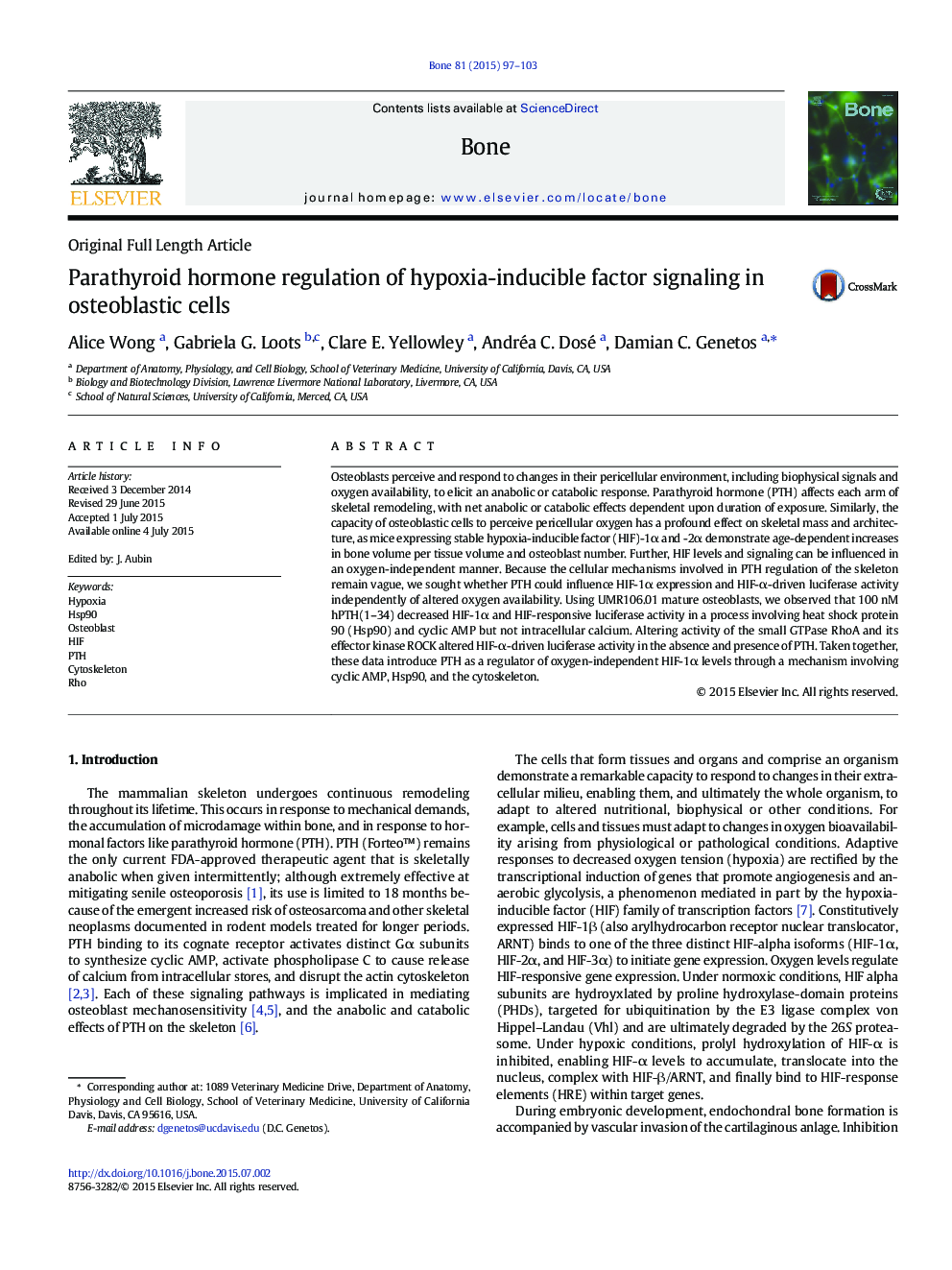| Article ID | Journal | Published Year | Pages | File Type |
|---|---|---|---|---|
| 5889238 | Bone | 2015 | 7 Pages |
Abstract
Osteoblasts perceive and respond to changes in their pericellular environment, including biophysical signals and oxygen availability, to elicit an anabolic or catabolic response. Parathyroid hormone (PTH) affects each arm of skeletal remodeling, with net anabolic or catabolic effects dependent upon duration of exposure. Similarly, the capacity of osteoblastic cells to perceive pericellular oxygen has a profound effect on skeletal mass and architecture, as mice expressing stable hypoxia-inducible factor (HIF)-1α and -2α demonstrate age-dependent increases in bone volume per tissue volume and osteoblast number. Further, HIF levels and signaling can be influenced in an oxygen-independent manner. Because the cellular mechanisms involved in PTH regulation of the skeleton remain vague, we sought whether PTH could influence HIF-1α expression and HIF-α-driven luciferase activity independently of altered oxygen availability. Using UMR106.01 mature osteoblasts, we observed that 100 nM hPTH(1-34) decreased HIF-1α and HIF-responsive luciferase activity in a process involving heat shock protein 90 (Hsp90) and cyclic AMP but not intracellular calcium. Altering activity of the small GTPase RhoA and its effector kinase ROCK altered HIF-α-driven luciferase activity in the absence and presence of PTH. Taken together, these data introduce PTH as a regulator of oxygen-independent HIF-1α levels through a mechanism involving cyclic AMP, Hsp90, and the cytoskeleton.
Related Topics
Life Sciences
Biochemistry, Genetics and Molecular Biology
Developmental Biology
Authors
Alice Wong, Gabriela G. Loots, Clare E. Yellowley, Andréa C. Dosé, Damian C. Genetos,
